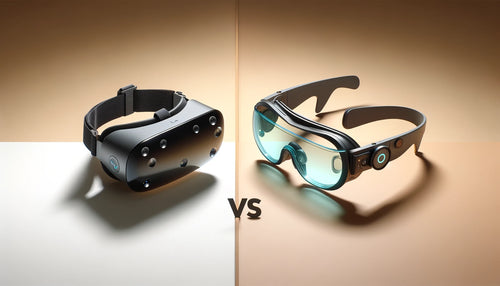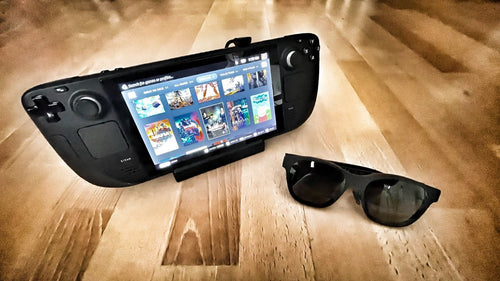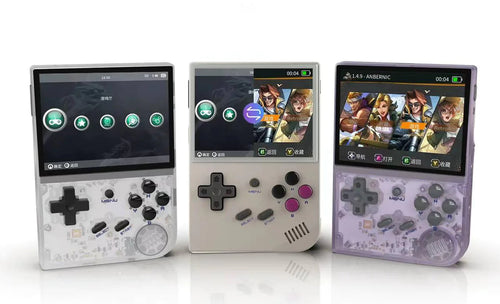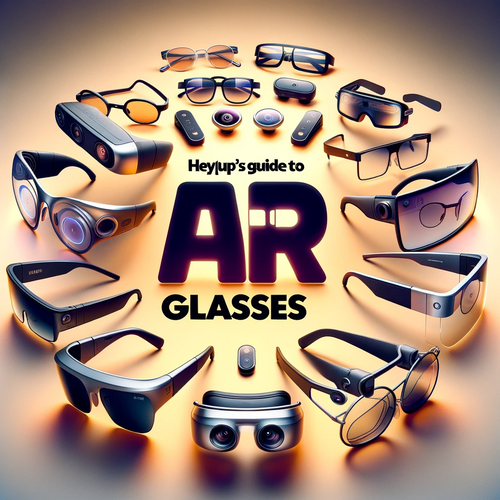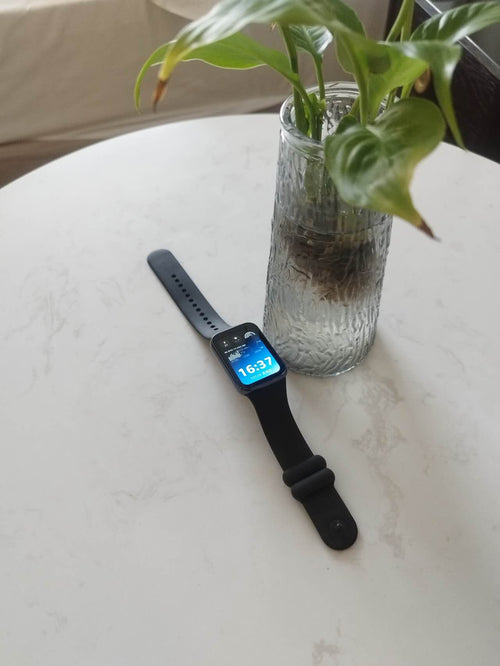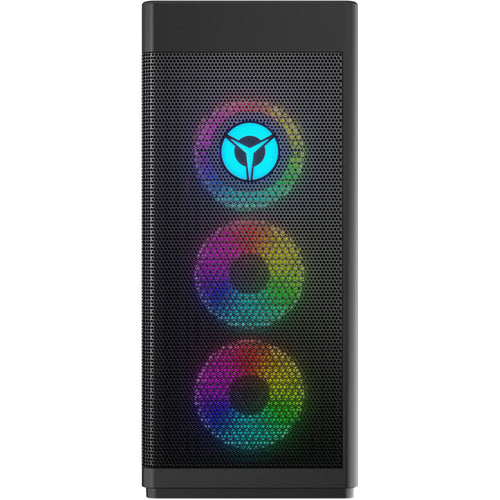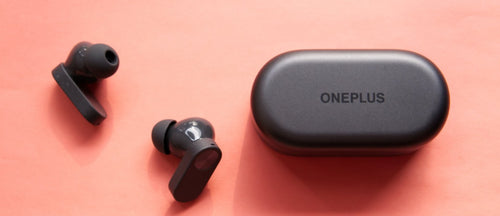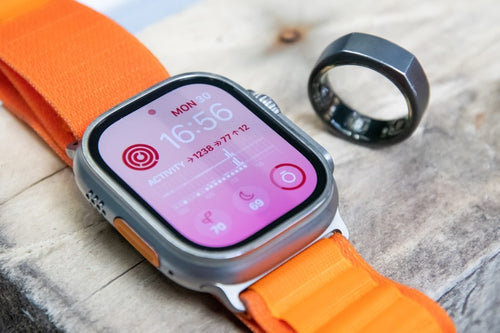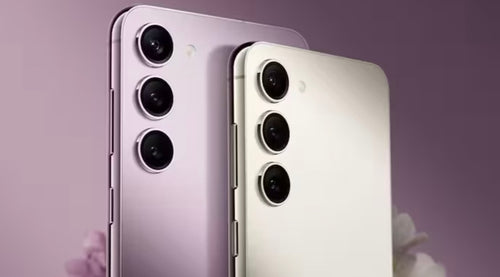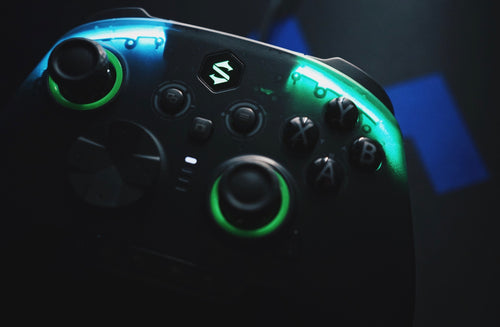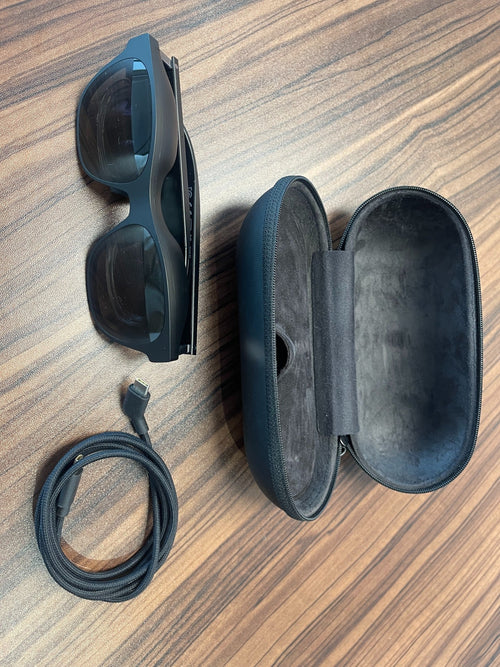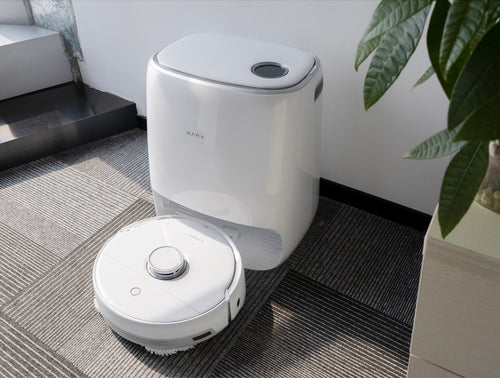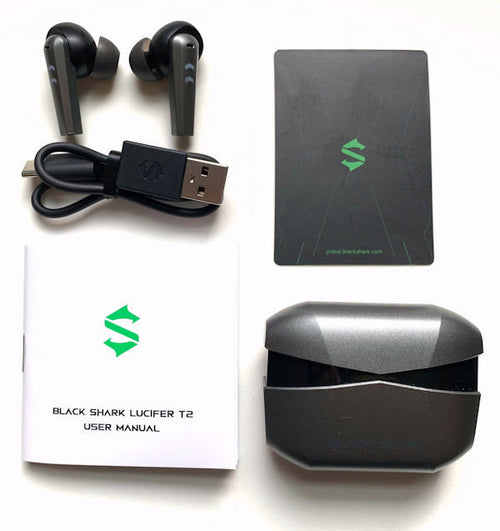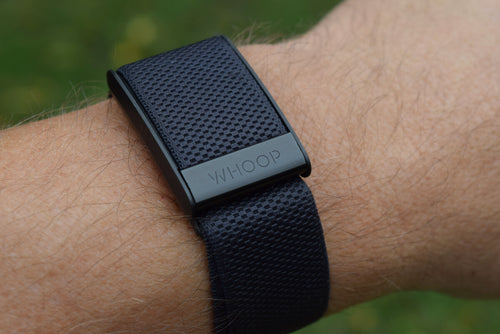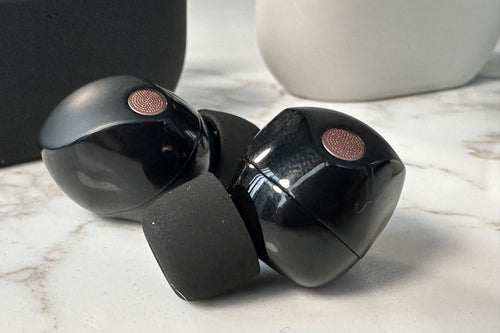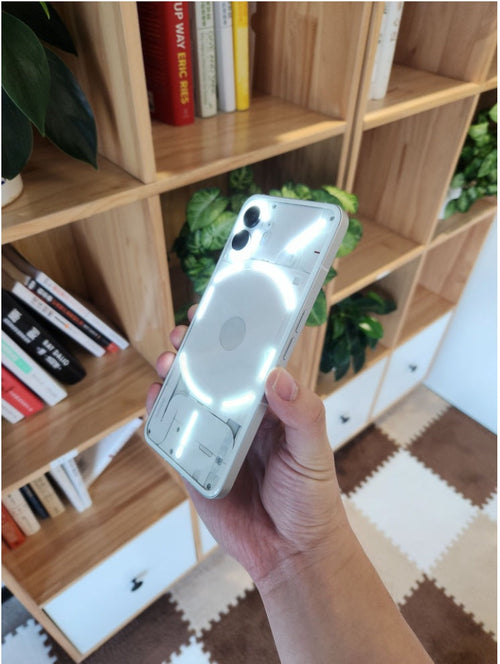The Best AR Glasses with Cameras in 2024

Augmented reality smart glasses keep advancing, and leading-edge models now integrate cameras, expanding their capabilities. By fusing computer vision with digital overlays, camera-enabled AR glasses open fresh possibilities.
Welcome to Heyup's exciting dive into the world of the best AR glasses with cameras 2024 edition. In this journey, we're unraveling the marvels of augmented reality. Augmented reality smart glasses keep advancing, and leading-edge models now integrate cameras, expanding their capabilities. It's all about blending the magic of digital overlays with the power of computer vision to unlock new, thrilling possibilities.
Imagine snapping photos without lifting a finger or diving into the realm of advanced computer vision - these camera-equipped AR wonders make it all happen.
From capturing photos hands-free to advanced computer vision applications, built-in cameras augment what AR glasses can achieve. We highlight the top AR glasses with a camera showing the most potential in 2023.
The best AR Glasses with Cameras
TCL RayNeo X2
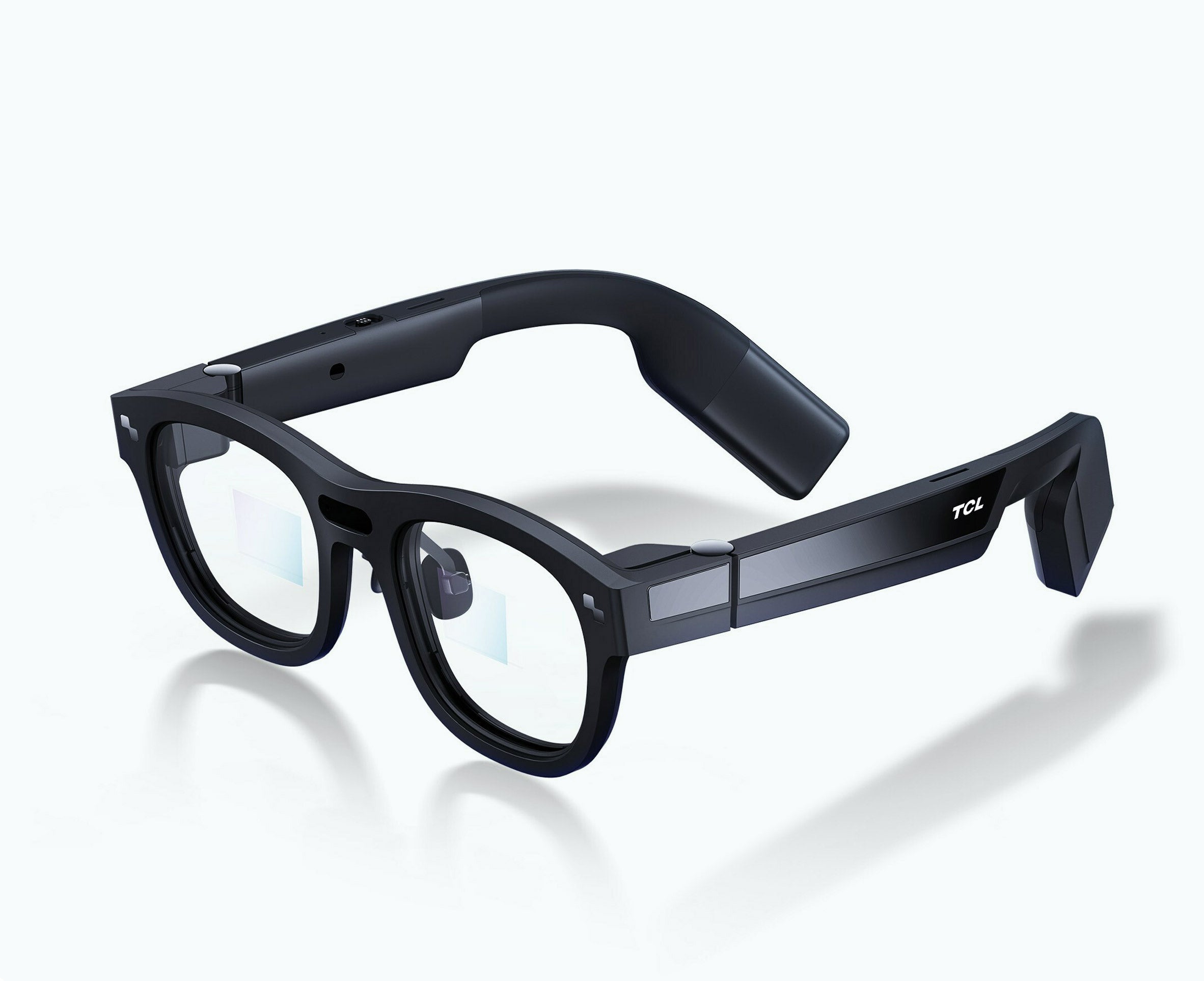
See our TCL Rayneo comparison here
Spec-wise, the TCL RayNeo X2 smart glasses are powered by a Qualcomm Snapdragon XR2 chip for robust performance comparable to top-end VR headsets. They utilize binocular MicroLED displays with waveguide optics to enable see-through 1080p visuals projected right before your eyes.
Weighing just 75 grams, their lightweight open-view design allows for unrestricted movement and all-day wearability. Integrated speakers and a front-facing "HD" camera round out the self-contained capabilities.
In terms of features, the RayNeo X2 shines through remarkably intuitive live translation and subtitling. Simply turn the mode on and spoken words, whether in English or other languages, appear in your view automatically. The glasses even differentiated between multiple conversations in testing.
Navigation also comes to life with AR overlays highlighting directions and nearby landmarks dynamically. More applications in areas like gaming and content streaming show promise as TCL expands the functionality.
The integrated camera enables first-person recording for photos and videos accessible right from your phone. While quality lags dedicated shooters, the hands-free operation creates new capture possibilities.
Overall, the RayNeo X2 delivers a functional, convenient gateway into augmented reality trends. Although still at a starting point, TCL nails the fundamentals from crisp displays and seamless interfaces to long battery life and wearable ergonomics. For those seeking an affordable escape into AR-enhanced cycles of communication, creation, and consumption, the RayNeo X2 warrants a look.
INMO Air2

Spec-wise, the INMO Air2 stands out with its completely wireless design enabled by built-in WiFi/Bluetooth and a robust battery supplying up to 5.5 hours of continuous usage per charge. Processing power comes from a capable quad-core chip with 2GB RAM and 32GB storage.
For visuals, dual full-color micro OLED displays beam a 50-inch equivalent screen floating before your eyes. While not the sharpest at 640x400 resolution, it competently handles media and UI elements. 8MP and depth tracking cameras on the frame edges facilitate AR overlays and environmental mapping as well as the ability to snap whilst on the move.
Functionality-wise, the INMO Air2 intrigues with seamless translation of conversations in front of you and intuitive screen mirroring using the ApowerMirror app. The glasses also pack built-in speakers and a novel ring controller for navigating the Android-based UI.
Overall, the INMO Air2 sells a compelling vision of the future where information and experiences integrate more seamlessly into our daily lives. Standout features like cable-free operation, real-time translation, and smartphone linking showcase AR's promise.
At $599, the INMO Air2 gives early access to next-gen assistive wearables. While rough edges remain regarding comfort, apps, and camera performance, the glasses largely deliver as a forward-looking package. For techies seeking a functional escape into augmented reality, the INMO Air2 warrants consideration.
BQXX Camera Glasses
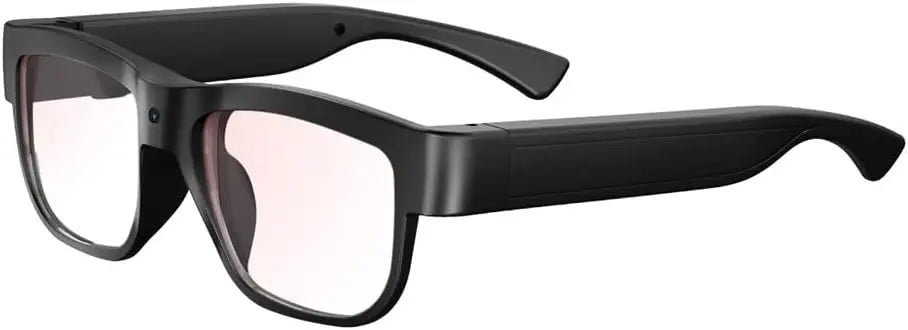
The BQXX Camera Glasses integrate a 1080p shooter inside a standard eyeglass frame along with buttons for operation. They include a microSD card slot to store footage locally and a micro-USB charging port for the onboard battery.
While they may resemble normal prescription glasses, a closer examination reveals the round camera module nestled in the bridge area. The device houses all components internally with no dangling wires or attachments.
The BQXX glasses are able to capture decent quality video with smooth frame rates. They serve as a capable wearable camera for recording life’s candid moments hands-free. However, colors appear slightly faded compared to a smartphone camera.
Being lightweight at just 46 grams, the BQXX glasses remain comfortable for prolonged viewing or recording. The battery lasts around an hour and a half per full charge. While no standalone lens display is present, users can pair the video output to a phone screen.
For those seeking an everyday wearable camera that doesn’t attract attention, the discreet BQXX glasses should fit the bill. They make an excellent dashboard camera as well for road trips or rideshares. At an affordable price point, the device compromises on bleeding-edge features for the sake of accessibility.
Ray-Ban Stories

Enclosed within Ray-Ban’s iconic Wayfarer frames lies a 5MP dual camera system for capturing photos and 60-sec videos, along with speakers, mics, and sensors to enable an audiovisual experience. The Stories integrate directly with Facebook, Messenger, and WhatsApp for streamlined sharing.
The glasses connect via Bluetooth and Wi-Fi and include touch controls on the arms for easy operation. You can store up to 30 videos or 500 photos locally before offloading media to the View app on your paired smartphone. The bundled charging case provides up to three full recharges.
In practice, the Ray-Ban Stories deliver passable image and video quality that's reasonably smooth and colorful but can't match modern smartphone shooters. More impressively, the glasses nail the integration between hardware and software, with the View app providing an intuitive hub for media management, editing, messaging, and more.
While the audio performance leaves much to be desired, the Stories work sufficiently for background listening. And the iconic styling blended with handy voice assistant features makes for a relatively polished product given the nascence of the smart eyewear space.
For those seeking a fashion-forward take on wearable tech that enables life logging and online sharing with some basic smart features thrown in, the Ray-Ban Stories make a case as a daily accessory. But expectations need calibration around the optics and audio as trade-offs for the convenience and style.
